Product series:
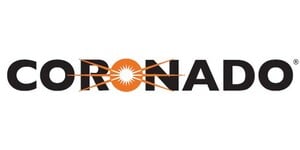
At the end of the 1990s David Lunt, the brilliant optical designer, founded the Coronado Technology Group in Tucson, Arizona. With his company, he has made solar observation affordable for the amateur astronomer. The PST (Personal Solar Telescope) is legendary to this day. Thanks to this instrument, the observation of the solar chromosphere at the H-alpha wavelength has become widespread.
In order to cope with the huge demand for his telescopes, David Lunt joined forces with Meade Instruments in 2004. Meade continues to successfully operate under the Coronado brand.
The PST is still very popular, but in the meantime, Coronado has become known for the SolarMax series of solar telescopes. These are among the best H-Alpha telescopes on the market and are still affordable - very much in line with David Lunt's original aim. David Lunt died in 2005.
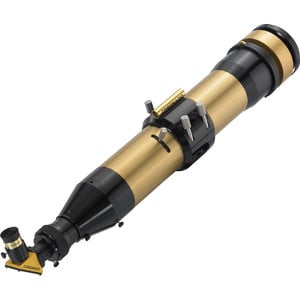
Coronado
ST 90/800 SolarMax II BF15 <0.5Å Double Stack OTA
$ 8,500.00
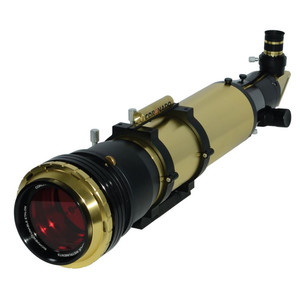
Coronado
ST 90/800 SolarMax III BF30 <0.7Å OTA
$ 10,700.00
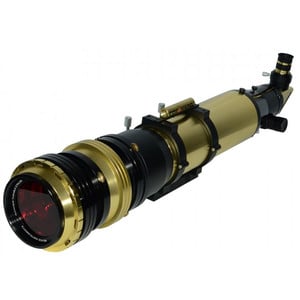
Coronado
ST 90/800 SolarMax III BF15 <0.5Å Double Stack OTA
$ 11,400.00
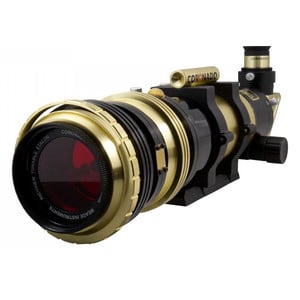
Coronado
ST 70/400 SolarMax III BF15 <0.5Å Double Stack OTA
$ 6,000.00
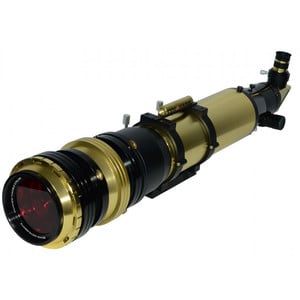
Coronado
ST 90/800 SolarMax III BF30 <0.5Å Double Stack OTA
$ 12,700.00
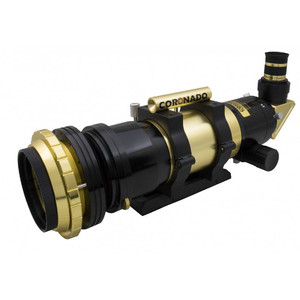
Coronado
ST 70/400 SolarMax III BF15 <0.7Å OTA
$ 4,590.00
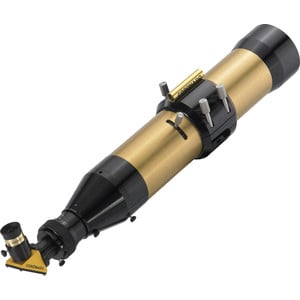
Coronado
ST 90/800 SolarMax II BF15 <0,7A OTA
$ 5,900.00
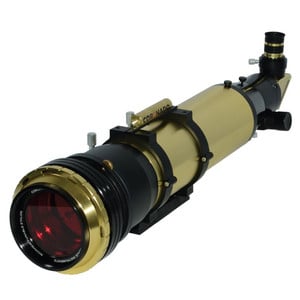
Coronado
ST 90/800 SolarMax III BF15 <0.7Å OTA
$ 7,300.00
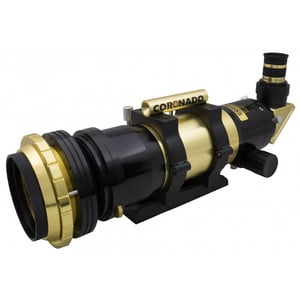
Coronado
ST 70/400 SolarMax III BF10 <0.7Å OTA
$ 4,350.00
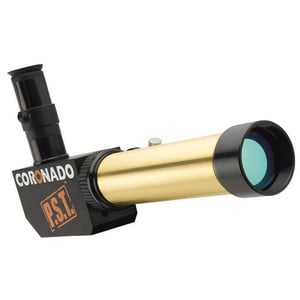
Coronado
ST 40/400 PST Personal Solar Telescope OTA
$ 1,840.00
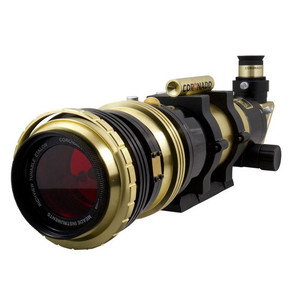
Coronado
ST 70/400 SolarMax III BF10 <0.5Å Double Stack OTA
$ 5,000.00
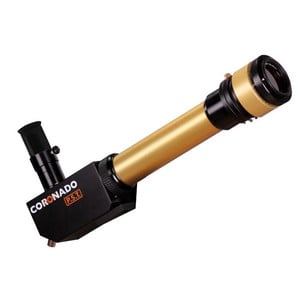
Coronado
ST 40/400 PST Personal Solar Telescope <0.5Å OTA
$ 2,500.00
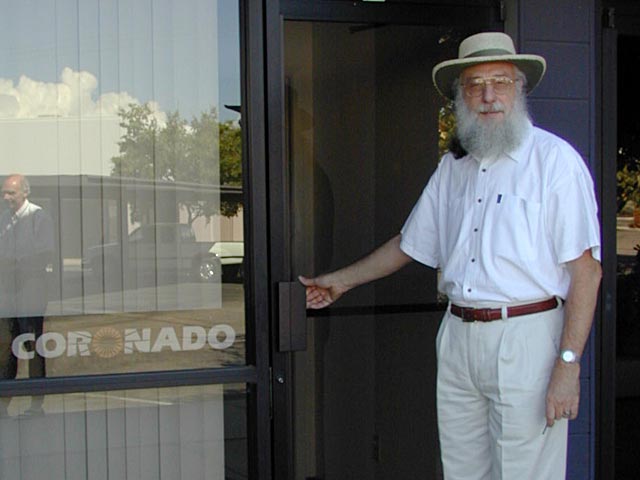 Quelle: Sky&Telescope, Rick Fienberg
Quelle: Sky&Telescope, Rick FienbergThe photo shows David Lunt in 2001 in front of his office in Tucson, Arizona. An obituary with a short biography of David Lunt can be read on Sky & Telescope.
His H-alpha telescopes revolutionized solar observing as they were the first affordable instruments of their kind. The H in H-alpha stands for hydrogen. H-alpha is a specific wavelength of light emitted by hydrogen atoms in the Sun. The wavelength of this light is 656 nanometres, falling within the red part of the spectrum.
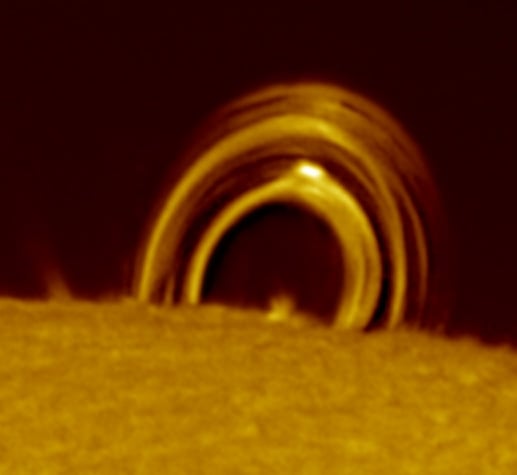 Eine Protuberanz, aufgenommen mit einem 90mm SolarMax III
Eine Protuberanz, aufgenommen mit einem 90mm SolarMax IIIA layer lying above the solar atmosphere’s photosphere becomes visible H-alpha light. This is called the chromosphere, as it appears as a red, coloured fringe during total eclipses.
The photosphere is the source of all visible light from the Sun and can be observed through telescopes using classic white light neutral density filters. The famous ‘eclipse glasses’ can also be used to view the photosphere.
While the photosphere normally shows few or more spots, depending on solar activity, there is always something going on in the overlying chromosphere to observe: prominences, much larger than our Earth, are visible at the edge of the Sun and as dark filaments above the solar disk. Bright flares - violent outbreaks of radiation - accompany the dark sunspots. This ‘scenery’ changes from day to day, or even within just a few hours, which adds to the fascination of solar observing in the H-Alpha region.
Coronado SolarMax III
